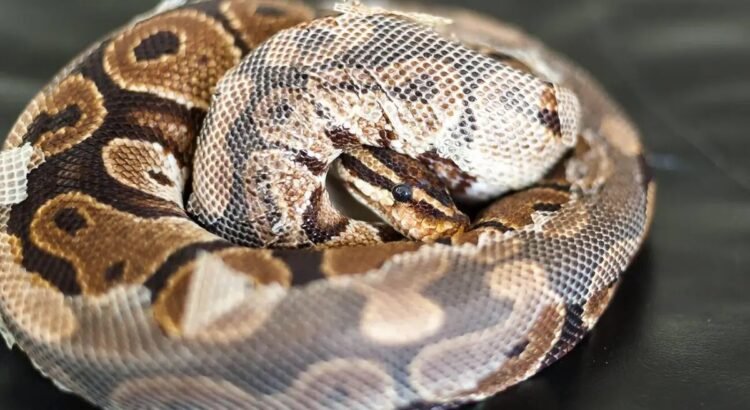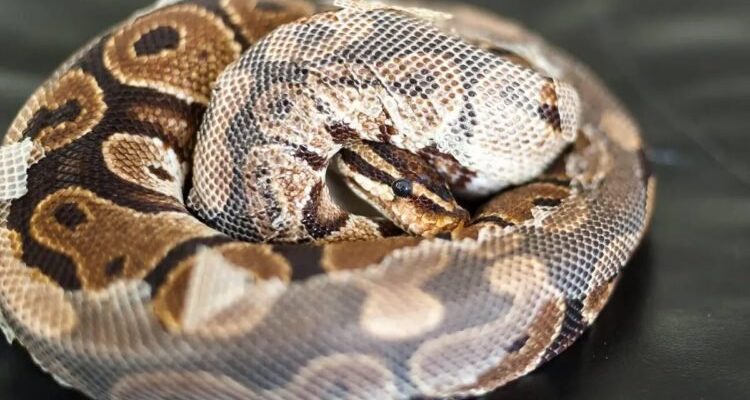
First off, understanding how and when ball pythons shed is key. This process is not just about changing skin; it reflects the snake’s growth, health, and well-being. If you notice your pet acting a bit differently or if you see some signs of shedding, don’t worry. With a little knowledge and care, you can support your snake through this important ritual. So grab a cup of coffee, and let’s explore the ball python shedding process together!
What Is Shedding and Why Is It Important?
Shedding, or molting, is a natural process that happens to all snakes, including ball pythons. As they grow, their skin doesn’t stretch, so they need to shed their old skin for new, larger skin underneath. This can happen several times a year, depending on the age and health of the snake. Younger snakes tend to shed more frequently as they grow, while adults might shed a few times a year.
Here’s the thing: shedding is not just about getting rid of old skin. It’s also a chance for your ball python to eliminate parasites and keep their skin healthy. It’s like a fresh start! A healthy shed indicates that your snake is well-fed, hydrated, and living in a suitable environment. If shedding doesn’t occur properly, it can be a sign of stress or health issues.
When your ball python is about to shed, you’ll notice some key signs. The skin may appear dull, and the eyes might turn milky or blue. This is the body’s way of preparing for the upcoming change. Think of it like pre-spring cleaning—your snake is getting ready for a fresh new look!
Signs Your Ball Python Is Shedding
Before a ball python sheds, they go through several noticeable changes. Here are some common signs to watch for:
- Dull Skin: Healthy skin has a nice, shiny sheen. When your snake starts to look a bit dull, that’s often the first sign of an upcoming shed.
- Blue Eyes: About 24 to 48 hours before shedding, your snake’s eyes will turn a cloudy blue. This is a temporary phase, so don’t panic!
- Behavior Changes: You might notice your snake becoming more reclusive or less active. This can happen as they prepare to shed.
- Increased Rubbing: Sometimes, snakes will rub against surfaces to help them get rid of their old skin. This is a normal behavior during the shedding process.
You might be wondering, “Should I do anything if I see these signs?” Generally, there’s no need for panic. But it’s a good idea to ensure your snake has a comfortable and clean habitat, as this can help them shed more easily.
How to Help Your Ball Python During Shedding
When your ball python is shedding, there are several ways you can assist them to make the process smoother. Here are some helpful tips to keep in mind:
1. Maintain Humidity: Snakes often shed better in a humid environment. Aim for humidity levels around 50-60%. You can increase humidity by misting the habitat or adding a humid hide, which is a small, moisture-rich area where your snake can feel more comfortable.
2. Provide Clean Water: Always ensure that your snake has access to clean, fresh water. This helps to hydrate their skin and makes shedding easier. A proper water bowl size is essential too—not too small, and not too deep.
3. Avoid Handling: While it might be tempting to show off your snake, it’s best to limit handling when they’re about to shed. This is a sensitive time, and minimizing stress can help them shed more comfortably.
By providing the right conditions, you’re not just helping your ball python shed; you’re also ensuring their overall health and well-being.
What to Do If Shedding Goes Wrong
Occasionally, things don’t go as smoothly as planned. You might notice that your ball python has shed only partially or that there are leftover pieces of skin stuck to their body. This can sometimes happen, especially in areas like the eyes or tail, and it’s known as “retained shed.”
If you notice that your snake has retained shed, don’t worry too much! Here are steps to take:
– Increase Humidity: First, make sure you boost the humidity in their enclosure. This can help loosen any stuck skin.
– Soak Your Snake: A short soak in warm water can help. Just make sure that the water is not too hot or too cold—lukewarm is best. Keep an eye on them during this to ensure they are safe.
– Gentle Help: If your ball python still has retained shed after a soak, you can very gently use a damp cloth to help remove it. Never pull on the skin forcefully, as this can hurt your snake.
If you find that you’re struggling with retained shed regularly, it may be time to evaluate the humidity and temperature levels in their enclosure.
Post-Shedding Care for Your Ball Python
Once your ball python has shed their skin, there are a few important things to consider for their post-shedding care. Just like you might treat yourself to a good meal after a tough workout, your snake deserves some TLC too.
1. Check for Any Abnormalities: Inspect your snake’s skin for any signs of injury, diseases, or retained shed. A healthy shed should look smooth and intact. If you notice anything concerning, consider consulting a vet.
2. Adjust Feeding Schedule: After shedding, it’s a great time to offer a meal. But don’t rush in right away—wait a couple of days to ensure they’re ready. Their appetite might be a bit low right after shedding.
3. Maintain the Environment: Continue monitoring the humidity and temperature in the enclosure. Keep the habitat clean and provide hiding spots where they can feel secure.
Taking these steps can enhance your ball python’s comfort and happiness, making their shedding experience much more manageable overall.
When to Consult a Veterinarian
Sometimes, despite our best efforts, things don’t go according to plan. If your ball python seems to be struggling with shedding repeatedly, or if you see any unusual symptoms such as severe lethargy, difficulty in movement, or signs of injury, it’s best to consult a vet who specializes in reptiles.
Your vet can offer guidance on handling specific issues, possible infections, and the general health of your snake. Always trust your instincts; if you feel something is off, it’s better to be safe than sorry!
The ball python shedding process is an essential part of their life. By being aware of the signs and knowing how to help, you can ensure that your snake has a smooth and healthy experience. Remember, it’s all about feeling comfortable in their environment and supporting their needs.
Taking the time to understand and care for your ball python during shedding not only enhances their well-being but strengthens your bond with them. So, keep an eye out for those signs, and don’t hesitate to lend a helping hand when needed! Your patience and attentiveness will surely pay off, making you a fantastic snake parent.

